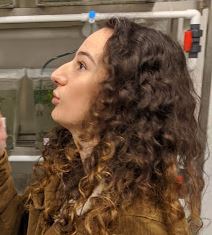Doctoral Students
More than the sum of its parts? Whole animal performance vs. muscle physiology in African clawed frogs The African clawed frog, Xenopus laevis, has become the model amphibian in many fields of biological sciences. Animals from Jonkershoek, in the Western Cape, have been bred and transported to laboratories the world over, becoming the mainstay of enquiries into embryology, biochemistry, cellular studies and genetics. The number of scientific fields that use X. laevis continues to grow, and with them laboratory colonies and invasive populations. Genetic studies of invasions suggest that (almost - except France) all come from the south-western Cape. This species, is therefore reasonably well studied in terms of its physiology, both at the whole animal and whole muscle levels. But we still don't know anything about the differences between populations, both in their native range, and also in invasive populations. Co-Tutelle with Anthony Herrel @ MNHN Paris Eavesdropping on South Africas most endangered marine mammal Our understanding of population dynamics for South African humpback dolphins is currently limited by our ability to adequately study individuals using traditional boat-based surveys and photographic mark-recapture techniques. Given the small number of individuals remaining in the population, individual based monitoring is particularly important to answer important questions that will aid in developing adequate conservation actions. This project will utilise acoustic monitoring of humpback dolphin occurrence throughout coastal South Africa using a network of long-term moored hydrophones. This will be possible through identification of individual acoustic signals (signature whistles) used in the species, like those identified in other dolphin species. Through passive monitoring of these signature whistles, I aim to generate key information on individual movement, sociality and density which will in turn produce important data for future management and conservation actions. Supervisors Tess Gridley, Simon Elwen, John Measey
Laurie Araspin

Sasha Dines
